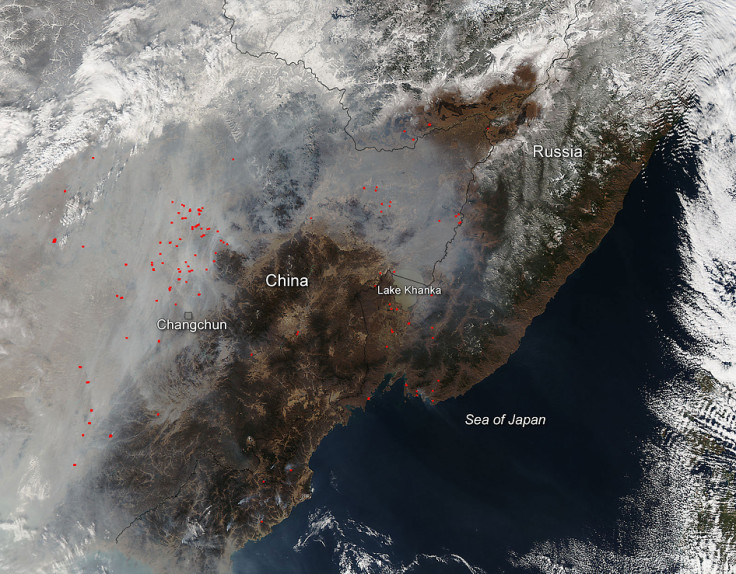China Shrouded in Haze Arising from Slash-and-Burn of Crop Residues

Nasa's Aqua satellite has captured a smoky haze engulfing China on a day when Beijing recorded a poor indoor air quality index, asking citizens to stay indoors.
But this time around the haze has been attributed to the slash-and-burn agricultural practice, and not industrialisation, reports NatureWorldNews.
The US Consulate in Beijing recorded an air quality index (AQI) of 322 (Hazardous for all) on October 29, the day the haze was observed.
A "very unhealthy" AQI, has seen "significant aggravation of heart or lung disease and premature mortality in persons with cardiopulmonary disease and the elderly."
According to Nasa, the thick haze that Aqua spotted is from an agricultural practice that aims to remove leftover crops from a field after the harvest.
Temperature Inversion
In winter, the haze worsens due to temperature inversion that traps the pollutants close to the surface. In summer, the hot air tends to rise and carry away the pollutants.
The smoke released by burning biomass is a mixture of particles and chemicals produced by incomplete burning of carbon-containing materials. It contains carbon monoxide, carbon dioxide and particulate matter or soot, bad for the atmosphere and for human health.
This is also the reason why experts advise against burning of dried leaves and biomass in winter, a common practice in developing nations like India, where the practice provides a source of heat for the homeless bracing the cold.
Not only do the particles in air cause respiratory problems, but they can also lead to neurodegenerative problems in children.
Air pollution killed seven million people in 2012, causing one in eight of the total deaths globally, says the World Health Organization.
© Copyright IBTimes 2025. All rights reserved.





















